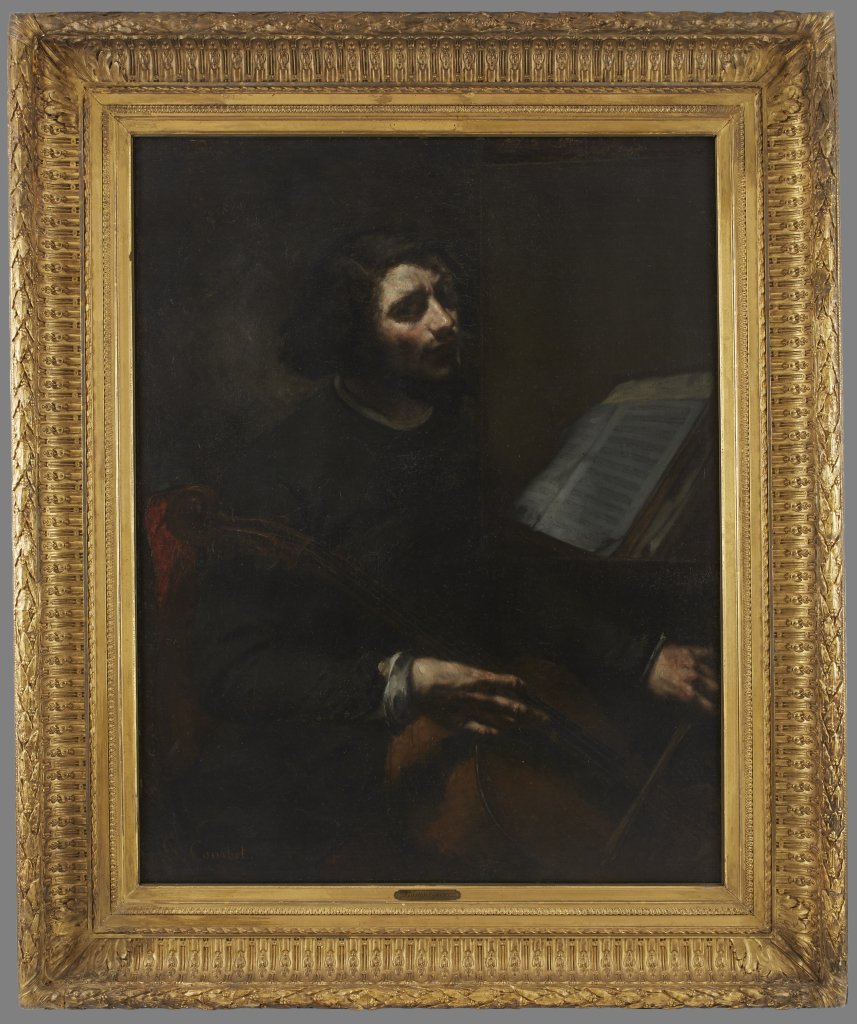For part of my vacation last week, I took a trip to my hometown of Portland, Oregon, and while there I visited the Portland Art Museum. I love this museum (you may remember when I admitted to skipping school to visit this same museum), and was thrilled to find out that a Frida Kahlo, Diego Rivera, and Mexican Modernism exhibit was happening at the same time.
But I’m not going to talk about that here (except parenthetically to say it was amazing and I learned so much).
Instead, I want to talk about a different painting. After, going through the Frida exhibit, I made my way through the rest of the museum to visit some of my favorite paintings—they’re like old friends to me at this point. One of which is this painting:

It’s called The Violioncellist and it was painted in 1847 by Gustave Courbet. I love this painting not because it’s the most beautiful painting I’ve seen, but because it’s interesting.
There are two things that make this painting interesting to me. The first thing is maybe a little less obvious (depending on how familiar you are with playing string instruments—and that’s how he’s holding the cello. Cello technique requires that the bow be held in the right hand (even if you’re left handed), so you can see here that the reversal of this standard indicates that Courbet was looking and studying himself in a mirror, and I just love that he kept it reversed instead of “fixing” it (also… the cello is very low on the body, which is weird).
Courbet liked to imagine himself in a lot of different types of roles, so his self-portraits tend to have him doing something he didn’t ordinarily do—which could be why he didn’t know his painting portrayed him holding a cello incorrectly.
The second thing that is interesting to me is maybe more obvious—and it’s in the upper corner of the painting. You probably noticed it when you looked at the picture above.
You see, this is not the only version of this painting. Courbet painted two of them. The placard next to the painting says:
“It seems likely that the Portland painting was made first. X-Rays of the canvas show that Courbet altered the figure’s positions and gestures. Also, the musical score was painted on another canvas and inserted into the composition. The other version in the National Museum of Art in Stockholm lacks the musical score, but was almost certainly based on the Portland version.”
So why am I talking about this odd painting from 1847? Because it made me think about mistakes. Now, we don’t know if anything in this painting was considered a mistake by Courbet. We do know he made alterations, we do know that he inserted part of another painting into this one (to cover something else he didn’t like? We don’t know—also it’s not necessarily a secret that that part of the painting was originally not part of the painting). But to some viewers, they see these parts as “mistakes,” and I wondered if any other famous works of art started off as or contained “mistakes” or “imperfections.”
And there are a lot!
Michelangelo’s David is missing a muscle between the spine and the right scapula, The Ninth Wave by Ivan Aivazovsky shows waves in the middle of the ocean having curving crests—but the waves that arise during storms in the open sea are cone-shaped and look different than those you can see from the shore, A Bar at the Folies-Bergere by Edouard Manet has reflections in a mirror that don’t match the things they are reflecting, People Reading Stock Exchange by Norman Rockwell shows a young man (or boy) with three legs, and there are countless other paintings that feature limbs with extra digits, or limbs just… not attached to a person.
I bring this up because none of these imperfections decrease the integrity of the artwork. These are all still works of art—and great works of art at that.
I think we can take that into our personal lives as well. Mistakes don’t just happen in the art world. We make them while parenting, while at work, while at school, with our friends, with our loved ones—anywhere and everywhere. We are still great, even through our mistakes and imperfections.
And in yet another post where I remind you that you are an artist, I want to leave you with some fun books—yes they are picture books—that encourage you to think about mistakes in a different light.
